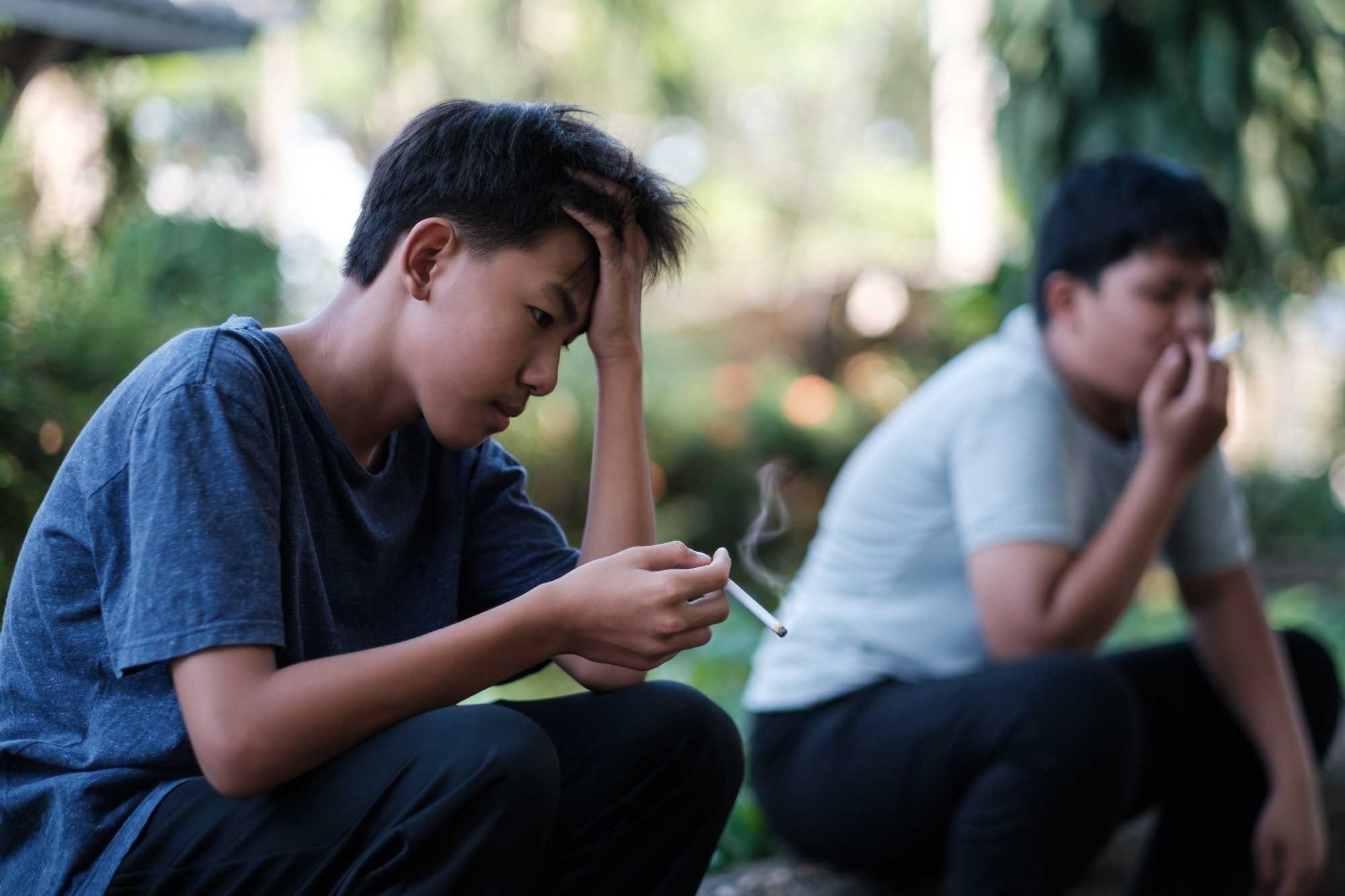In a recent study published in BMC Public Health, researchers used the nationwide longitudinal cohort study of Adolescent to Adult Health (Add Health) first to fifth-wave survey data to identify population subgroups with similar behavioral patterns between adolescence and adulthood.
They also explored subgroup estimators for physical activity (PA) and cigarette smoking behavior.
 Study: Characterization of trajectories of physical activity and cigarette smoking from early adolescence to adulthood. Image Credit: xyfen/Shutterstock.com
Study: Characterization of trajectories of physical activity and cigarette smoking from early adolescence to adulthood. Image Credit: xyfen/Shutterstock.com
Background
Smoking and physical inactivity are major risk factors for noncommunicable illnesses, cardiometabolic disorders, and all-cause death. SCT and SEM explain multidimensional aspects associated with these behaviors by highlighting reciprocal effects and interactions between self-efficacy and environmental factors.
These hypotheses have been included in behavioral treatments aimed at increasing physical activity or quitting smoking, although the outcomes in physical activity studies differed from those in cigarette smoking trials.
About the study
In the present study, researchers analyzed survey data from Add Health Waves I through V to identify population subgroups with comparable patterns of cigarette smoking and physical exercise from childhood to adulthood.
The researchers investigated the ideal latent class numbers and class-specific PA and smoking trajectories from early childhood to adulthood using the Add Health data. A national-level sample of adolescent United States (US) residents in grades 7.0 to 12 took part in the study, with 20,745 individuals at baseline.
Participants' parents participated in interviews based on their sociodemographic backgrounds and socioeconomic status.
In four additional waves, the team obtained data on participants' socio-demographic features, academic performance, peer relationships, biomarkers, health behavior, health outcomes, romantic associations, neighborhood- and family-level socio-environmental factors, and geospatial factors.
During in-person and at-home interviews, survey participants self-reported their cigarette smoking habits and their perceptions of parental, peer, and teacher support.
The researchers created a dichotomous variable to categorize respondents as non-smokers or current smokers for each wave. The respondents also self-reported their frequency of physical exercise.
At baseline, sociodemographic characteristics of interest were biological sex, race or ethnicity, parental education, and household income. The team performed in-home interviews to determine respondents' contentment with their present location, their neighborhood safety feeling, and their closeness to a fitness or recreational center.
Latent class mixture models (LCMM) were used to identify subgroups of physical activity and cigarette smoking trajectories from adolescence to adulthood, and multinomial logistic regressions assessed the associations between community- and individual-level estimators with trajectory class membership for both PA and cigarette smoking.
Results
The study included 20,745 individuals divided into five waves, with 71% participating in the second wave, 73% in the third wave, 76% in the fourth wave, and 59% in the fifth wave. In all waves, the percentage of females and individuals of all races and ethnicities was comparable.
Parental educational attainment was likewise consistent throughout all the study waves. Most respondents were women and non-white, with 51% of respondents smoking cigarettes in the last analysis.
The team divided the participants into three classes: moderately active (5.0%, n=1,067), habitually inactive (69%, n=14,257), and deteriorating activity (26%, n=5,410).
Moderately active individuals maintained moderate-intensity PA levels until 30 years of age, whereas sedentary individuals were the least physically active throughout the study.
The deteriorating activity group was most physically active before 15 years of age; however, their physical activity declined dramatically, leveling out at 25.0 years. Consistently inactive individuals were often females residing in low-income households with less educated parents.
The team found three non-linear smoking trajectory subgroups: permanently non-smoking individuals (72%), slow quitters (11%), and progressive smokers (16%). The progressive quitter group raised their cigarette smoking intensity before the age of 18 and gradually reduced it throughout adulthood.
From youth to young adulthood, the advancing smoker group regularly increased cigarette smoking intensity, with the highest rise from adolescence to early adulthood. The increase slowed after 22 years and reached a plateau at 26 years. Factors such as reported closeness with classmates, teacher caring, and school inclusion distinguished progressive smokers.
Adolescent characteristics such as gender, race, neighborhood environment, and peer support heavily influenced physical activity and cigarette smoking.
Males, non-Hispanic whites, and lower-income people are moderately active, whereas females are habitually inactive. Race predicts gradual quitters, with non-Hispanic black individuals being more committed to never smoking.
Neighborhood contentment, perceived care, social closeness, and school belonging lead to long-term nonsmoking behavior. Non-Hispanic black individuals were more likely to be long-term non-smokers.
Overall, the study findings showed that early adolescent age, socio-demographic, and psychological characteristics have a profound impact on long-term physical activity and cigarette smoking behaviors.
Modifiable factors such as access to fitness facilities and perceived peer proximity are associated with higher physical activity levels; however, perceived closeness increases the risk of smoking.
According to the findings, behavioral treatments concentrating on the neighborhood environment and peer interactions might help promote long-term physical activity and cessation.